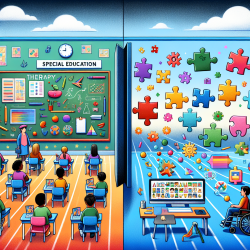The sensory world of children with Autism Spectrum Disorder (ASD) is often complex and challenging. A recent study titled Sensory Profiles in School-Aged Children with Autism Spectrum Disorder: A Descriptive Study Using the Sensory Processing Measure-2 (SPM-2) provides critical insights that can help practitioners tailor their interventions more effectively.
In this study, researchers compared the sensory processing patterns of 105 children with ASD to 70 typically developing (TD) peers using the Sensory Processing Measure-2 (SPM-2). The findings were revealing:
- Children with ASD exhibited significantly higher scores on the SPM-2, indicating more pronounced sensory processing issues across multiple domains.
- The study highlighted that within the ASD group, sensory processing issues were prevalent regardless of cognitive functioning levels.
- Specific sensory subscales such as hearing, social participation, and balance and motion showed notable differences between high-functioning (HF) and low-functioning (LF) children with ASD.
For practitioners, these insights offer several actionable strategies:
1. Tailored Interventions Based on Sensory Profiles
Understanding the unique sensory profiles of children with ASD can help in creating individualized therapy plans. For instance, children with heightened auditory sensitivity may benefit from noise-cancelling headphones or quieter environments.
2. Focus on Social Participation
Social participation is crucial for overall development. The study found that HF children with ASD showed better social participation scores. Practitioners can use this information to develop social skills programs that cater to the strengths and challenges of each child.
3. Addressing Balance and Motion
Interestingly, HF children exhibited more significant challenges in balance and motion. This suggests a need for incorporating activities that improve vestibular function, such as balance exercises and movement-based therapies.
By integrating these findings into practice, therapists can enhance their approach to sensory processing issues in children with ASD. This not only improves the effectiveness of interventions but also supports the child's overall development and well-being.
For those interested in delving deeper into the research, the full study is available at: Sensory Profiles in School-Aged Children with Autism Spectrum Disorder: A Descriptive Study Using the Sensory Processing Measure-2 (SPM-2).










